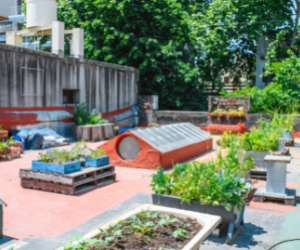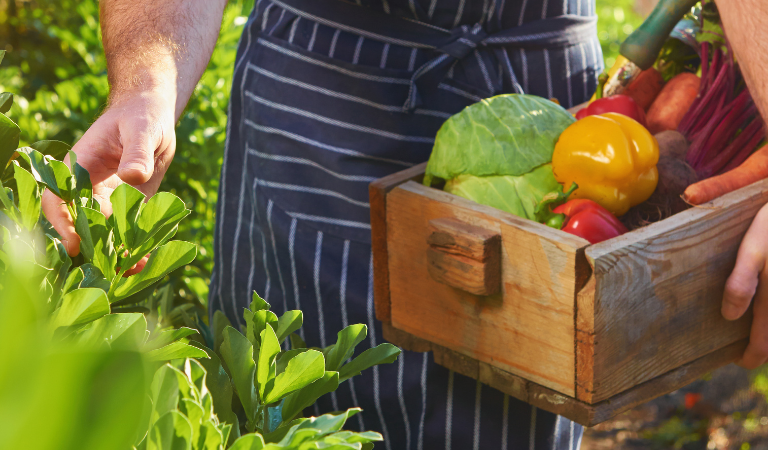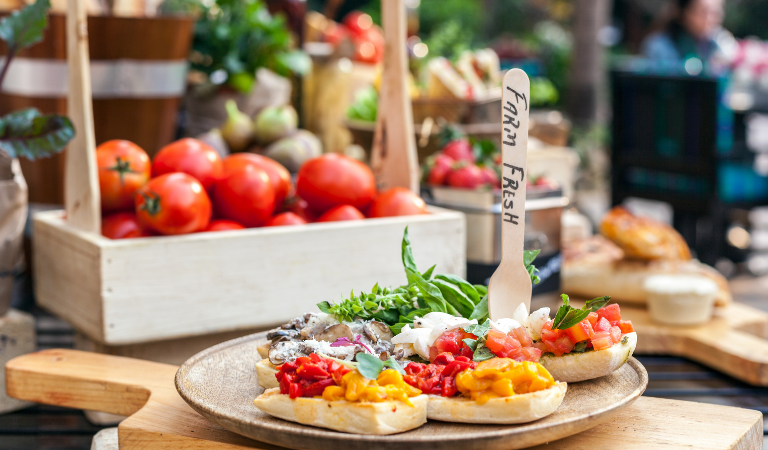Rooted in uplifting local farmers and serving up fresh, delicious produce, farm-to-table is a steadily growing movement with a lot to offer. Knowing where your food comes from is an appealing idea to consumers these days, who are drawn to sustainable and healthy alternatives to traditional dining. The farm-to-table movement allows restaurateurs to help customers trace back the origins of their favorite meals to local farms, and allow them to visit grazes and fields nearby through the produce found on their plate. If you're interested in learning all about farm-to-table, click here for a breakdown of the movement.
Although running a farm-to-table restaurant does present its own challenges, it can create a delicious and immersive experience that will instantly attract customers to dine at your establishment. Whether you're looking to start a farm-to-table restaurant from scratch or convert your current eatery to a farm-to-table establishment, there is a lot to prepare before you'll be able to open your doors to the public. From sourcing local farmers to growing your garden, below is everything you need to know on how to run a successful farm-to-table restaurant.
What To Expect When Opening A Farm-To-Table Restaurant
In order to properly operate a farm-to-table restaurant, expect to prepare up to a year in advance. You'll need to decide on what kind of fare will be served at your restaurant and research local farmers to figure out where to source from. Take some time to find out what kind of produce grows abundantly in your area to gain a sense of what kind of items you'll be able to incorporate into your menu.
To get the word out about your restaurant, you'll need to create an engaging marketing campaign that shows off your farm-to-table story to consumers. Creating relationships with local farmers takes time, but will be worth it in the long run as your business takes off. Sourcing fresh produce from local farmers and foragers will be more expensive than sourcing bulk produce from vendors, but the investment will be worth it as your restaurant grows in popularity.
Find Your Farm
Building connections with local farmers is the key to a successful farm-to-table restaurant. Do some research and visit the farmer's markets in the area to get a sense of the produce that is available near you. Depending on the needs of your restaurant, you'll want to find farms that grow the kind of produce you're looking for and have a seasonal supply that is large enough to accommodate the order you'll be placing for your restaurant.
Meet with several farmers and ask to tour their farmland to gain a better understanding of how they grow their produce. You might also be interested in speaking with local foragers and restaurant-supported agriculture cooperatives or RSAs, who could offer special produce that could be used to create limited seasonal menu items. When speaking with farmers, keep in mind some questions you should be asking them, such as:
- How are day-to-day operations run?
- What cleaning or produce washing methods are used?
- What kind of produce, meat, or dairy products do they offer?
- Do they provide weather warnings or bad harvest warnings?
- Can they supply the kind of produce you want in the volume required?
- How would inventory be delivered to you or where to pick up inventory?
After deciding on which local farms fit the needs of your business best, it's important to draw up a contract between your business and the farmers. Contracts are a great way to further the relationship between your restaurant and farmers while establishing a sense of trust. Discuss the terms you would like written into the contract, such as payment, inventory, and other points of interest. You should also draw up a proposed list of inventory to deliver alongside your contract so that farmers understand what your restaurant will need in advance and what they'll be able to provide.
Grow Your Own Garden

Although farm-to-table restaurants source the majority of their produce from local farms, restauranteurs have also gotten in the habit of growing small amounts of produce in their own backyard. Incorporating a garden in the back of your restaurant is a great way to have a guaranteed source of produce around. Even if your establishment is in the middle of a busy city, you can still use rooftops or indoor spaces to create a garden full of herbs, fruits, or root vegetables.
Hydroponic gardening is a method of planting that does not require soil but instead uses liquid mixed with sand or gravel. In a hydroponic garden, the nutrients plants need to grow healthily are dissolved in the water that surrounds the roots, which allows plants to absorb nutrients easily and grow at a much faster rate. There are many ways to go about hydroponic gardening and we suggest doing some research on which method works best for the space available at your restaurant. If you're looking to build an outdoor garden at your location, consider consulting with a local architect or city planner prior to construction, so that you can avoid any possible issues like improperly installed drainage or collapsing structures.
Create Your Menu
With a brand new inventory of fresh local produce to choose from, the menu possibilities are endless. Depending on the restaurant concept you are going for, using farm-to-table ingredients to put together an array of dishes will add an alluring edge to your business. It's important to make the most of your produce, so be sure to get creative with your menu ideas to incorporate as much of the fresh ingredients available as possible. Apart from the sustainability and fresh quality of dishes, what attracts many consumers to farm-to-table establishments is their revolving menu.
Because the inventory available from local farmers is bound to change season by season, the menu at your restaurant should reflect that. Building a menu around farm-to-table ingredients requires your chefs to be flexible with what is available. You might find your restaurant using roasted pumpkin in dishes during the fall, or fresh berries in the spring, or delicious root vegetables in the winter months. Farm-to-table restaurants tend to change their menu on a weekly or monthly basis, so be sure to include a note in your menu that items are subject to change.
In the case of any unexpected weather or bad harvests, have a contingency plan in place with a secondary produce supplier. It's important to be transparent with your customers about where you are sourcing your ingredients, so be sure to mention any changes in your inventory if there is a shortage of fresh produce. Running a farm-to-table restaurant means that your menu will look vastly different from the menus at fast-casual or buffet concepts, and will most likely be much smaller. However, a pared-down menu does not mean it is a lesser one, your guests will appreciate the interesting flavors and delicious dishes found at your restaurant.
Telling Your Farm-To-Table Story
Cultivating your restaurant's story is as important as finding the right farms to source from. Customers who are attracted to your restaurant because it is a farm-to-table food concept will be intrigued in learning more about where the ingredients found in their dishes come from. Create a marketing plan for your business that highlights the farms you source from, and the values of your restaurant. You could produce content that features your farm-to-table story on your restaurant's website or even on your menu. Encourage your staff to be informed on your restaurant's relationship with local farmers and the values of your business. Customers will enjoy being able to trace back their favorite dishes to the farms and will be motivated to think more critically about the food they consume.
Educating Your Employees
To ensure that your restaurant's farm-to-table story is translated to your customers, educating your employees on the food served at your establishment should be a priority. Your front-of-house staff should be well informed about the farms you source from in case customers have any questions. Chefs and the rest of your back-of-house staff would also be interested in learning more about the produce they are cooking with and how the farms you've partnered with operate.
Consider asking local farmers and foragers if they are willing to take your staff on a tour of their farms. Your staff will value being able to see the farms that your restaurants source from and any questions they have will be easily be answered by farmers. Educating your employees on the values of farm-to-table cooking will allow them to be well-versed in your restaurant's story and inspired in the kitchen.
Bringing Business To Your Farmers
Furthering the relationship between your restaurant and the farmers you work with is an essential part of your business. While your restaurant will be reaping the benefits of a farm-to-table concept, it's important to give back to your farmers as well. When creating a marketing plan for your restaurant, be sure to mention the farms, foragers, or RSA cooperatives you source from by name and include a brief summary of their values and history.
Depending on the farms you are sourcing from, you can encourage customers to tour their farmlands or visit their stalls at farmers' markets. As the publicity from your restaurant flows into local farmers, they'll be able to reap the financial benefits and possibly expand their revenue streams into gardening courses, exclusive produce boxes, or agritourism.










